top of page
Via Crucis Ingenuo (Naïve Via Crucis)
Exhibición realizada como cierre de residencia en la capilla del Castello San Basilio, Basilicata, Italia, 2022.
La serie es una reinterpretación y reemplazo del Via Crucis original de la capilla a partir de la adición de un error gramatical en la historia de Cristo, tomando como modelo operacional la hipótesis que dice que el mito de San Lorenzo (santo patrono del Castello) como mártir rostizado, no es más que un desarrollo ficcional errado a partir de un error tipográfico al listarlo como mártir.
Exhibition held as the conclusion of a residency at the chapel of Castello San Basilio, Basilicata, Italy, 2022.
The series is a reinterpretation and replacement of the chapel's original Stations of the Cross through the addition of a grammatical error in the story of Christ. It uses as an operational model the hypothesis that the myth of Saint Lawrence (the patron saint of the Castello) as a roasted martyr is merely a fictional development based on a typographical error listing him as a martyr.
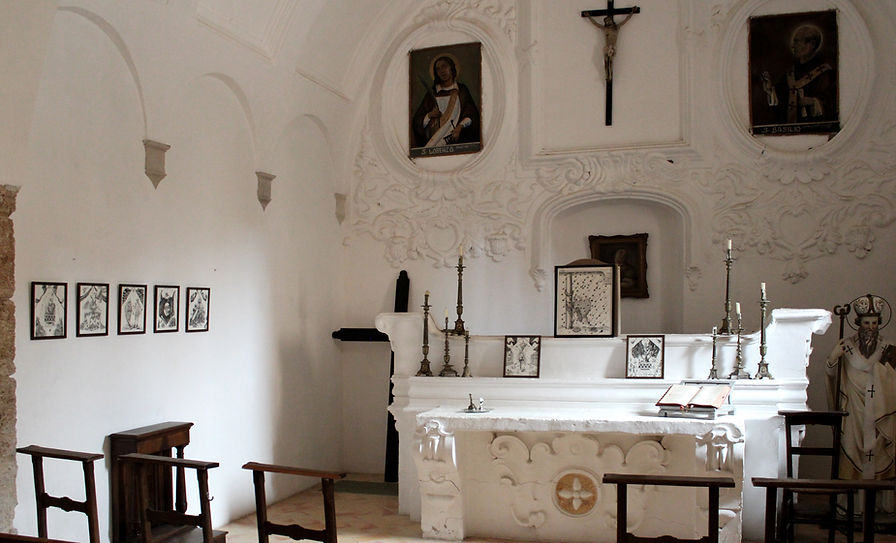
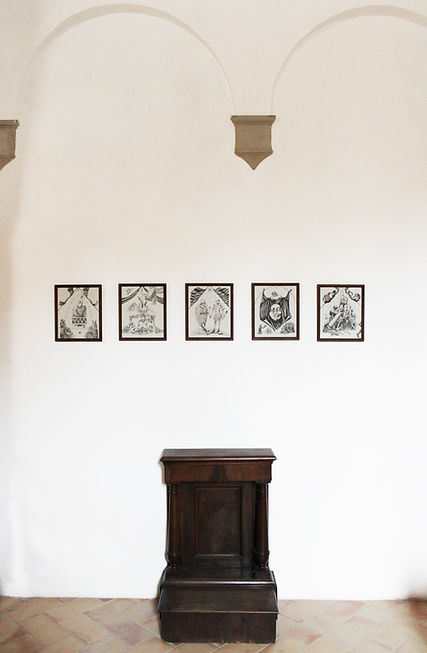
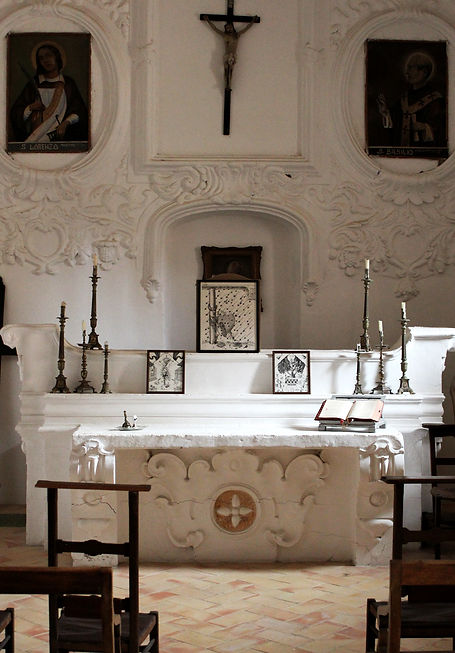
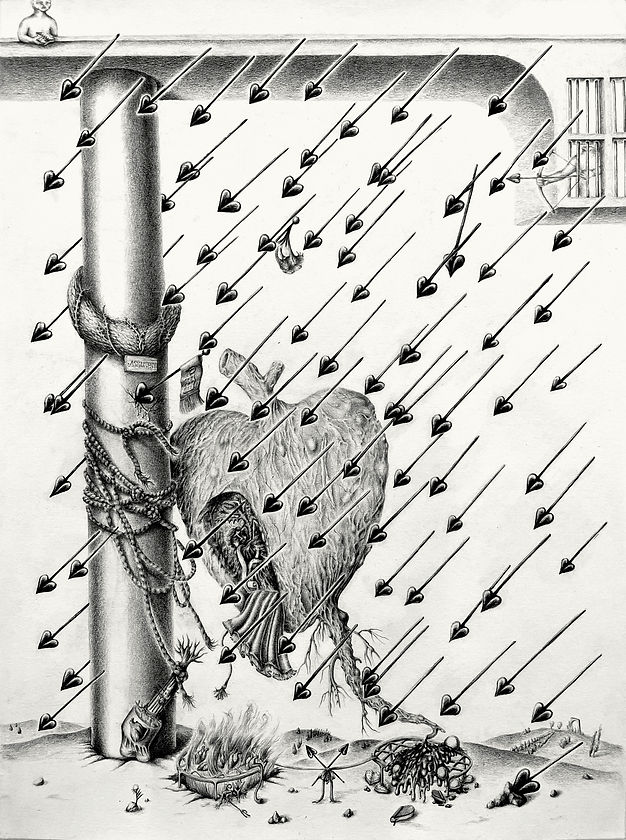
Lluvia (Rain)
Lápiz sobre papel (pencil on paper), 60 x 40 cm, 2022
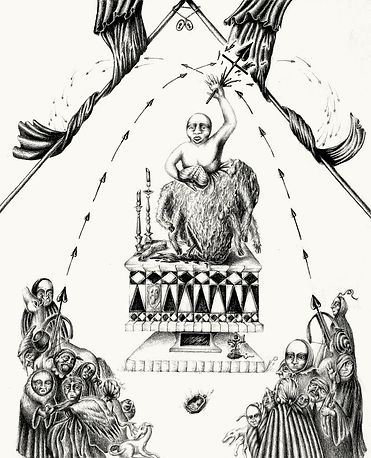
Segunda estación (Second Station)
Lápiz sobre papel (pencil on paper), 20x13cm, 2022
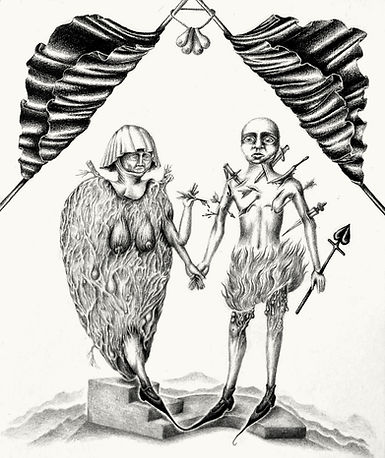
Cuarta estación (Fourth Station)
Lápiz sobre papel (pencil on paper), 20 x 13 cm, 2022
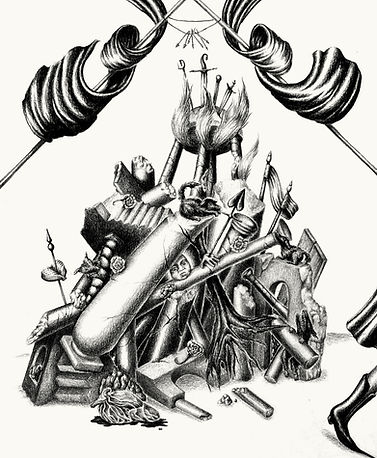
Séptima estación (Seventh Station)
Lápiz sobre papel (pencil on paper), 20x13cm, 2022
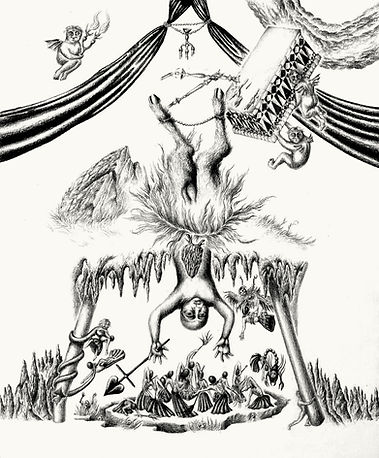
Tercera estación (Third Station)
Lápiz sobre papel (pencil on paper), 20 x 13 cm, 2022
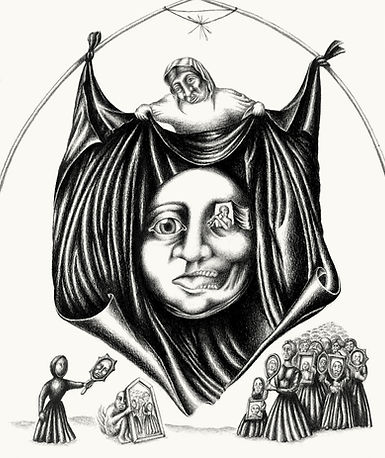
Sexta estación (Sixth Station)
Lápiz sobre papel (pencil on paper), 20 x 13 cm, 2022
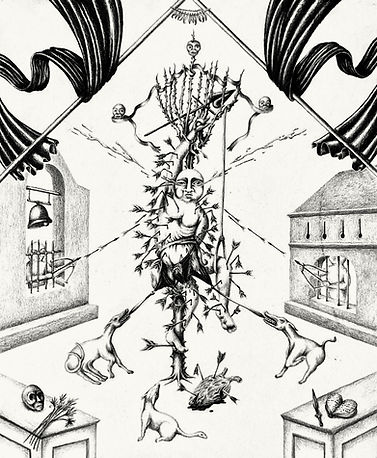
Undécima estación (Eleventh Station)
Lápiz sobre papel (pencil on paper), 20 x13 cm, 2022
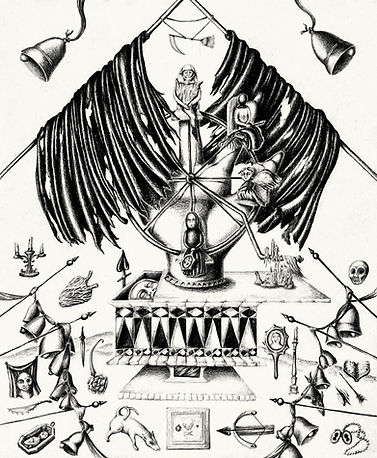
Decimocuarta estación (Fourteenth Station)
Lápiz sobre papel (pencil on paper), 20 x 13 cm, 2022
Castello San Basilio is delighted to present Via Crucis, Nicolás Said’s first solo exhibition in Italy. During his residency at Castello San Basilio, Nicolás Said (b. Buenos Aires, 1995) worked on seven new works on paper exploring the themes of religious and esoteric art, which he melded with autobiographical elements from his personal life. Having studied psychology at the University of Buenos Aires, Said has always been interested in analysing the unconscious world of dreams, another element that is extensively explored in his intricate drawings.
On view in Castello San Basilio’s chapel, the seven works on paper are inspired by the rich history of the castle, in particular by the Basilian monks who inhabited the property during the 7th century. Revisiting the chapel’s paintings of the Via Crucis, also known as Stations of the Cross, Nicolás Said’s works unfold like a palimpsest of personal grief blended with fictional forms and mythical creatures inhabiting unimaginable landscapes. Typically presented in either seven or fourteen images, the Via Crucis paintings served to depict Jesus Christ on the day of his crucifixion. Referencing history, dreams and the artist’s personal traumas, Said’s imagery unveils a contemporary reinterpretation of the ancient body of work, presenting the altered realities of the artist’s subconscious into which one can venture, and become lost. The subtly unsettling and violent compositions of the interiors are formed by both religious iconography like the altarpiece, juxtaposed to everyday contemporary objects like mirrors and baseball bats. These objects are ever-present in Nicolás Said’s compositions, creating a tension between past and present and fantasy and reality, extending their narrative beyond the physical world, merging myth and grotesquery.
The main character in the drawings, which in the original Via Crucis series is Jesus Christ, is depicted as a half-baby, half-goat creature, born out of a bestial heart. This figure represents vulnerability and naivety, but can also be viewed as the artist’s self-portrait. A cross is depicted in each work on paper. This symbol carries with it the infant’s passions and hardships. Each station, in fact, narrates a different stage of the protagonist’s life: from the moment of his birth to the moment of his death, encountering beauty and cruelty every step of the way.
Aloisia Leopardi, 2022.
bottom of page